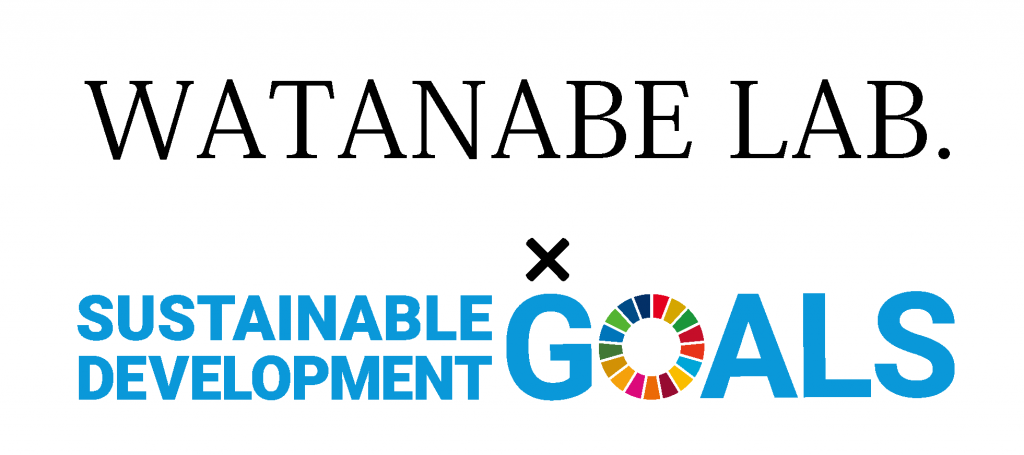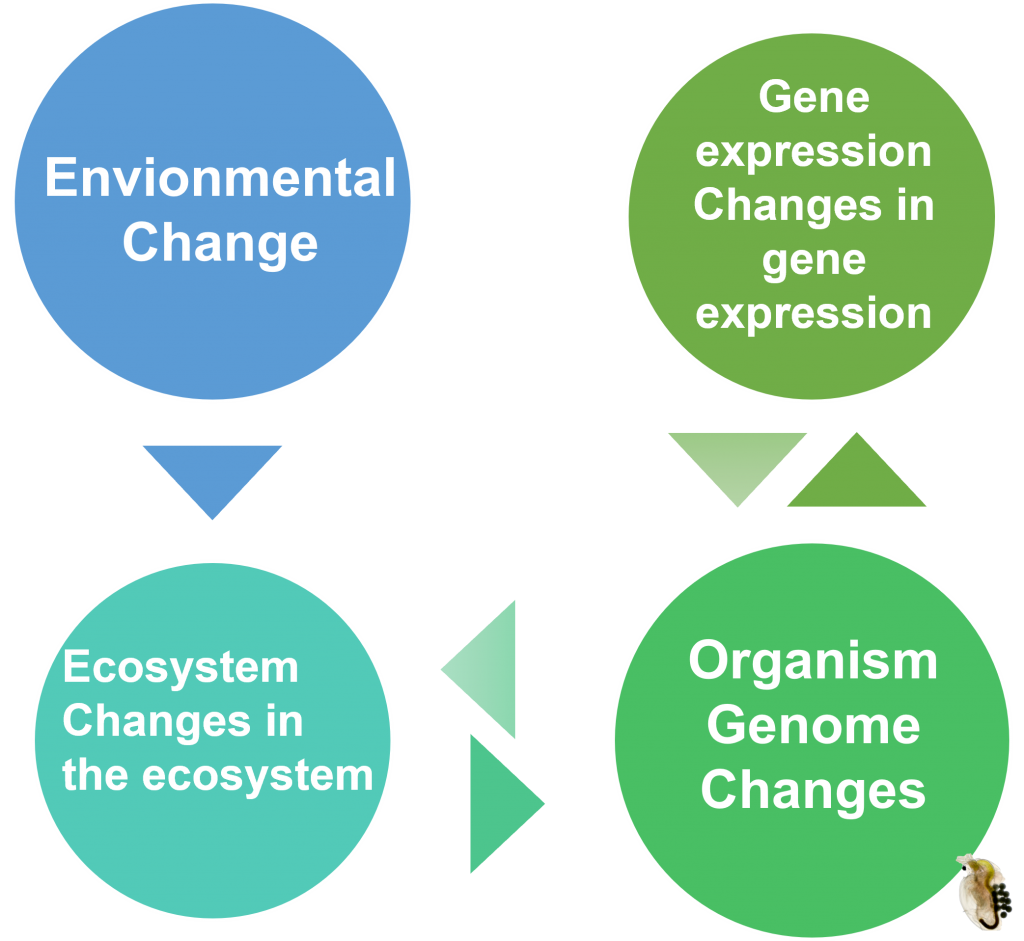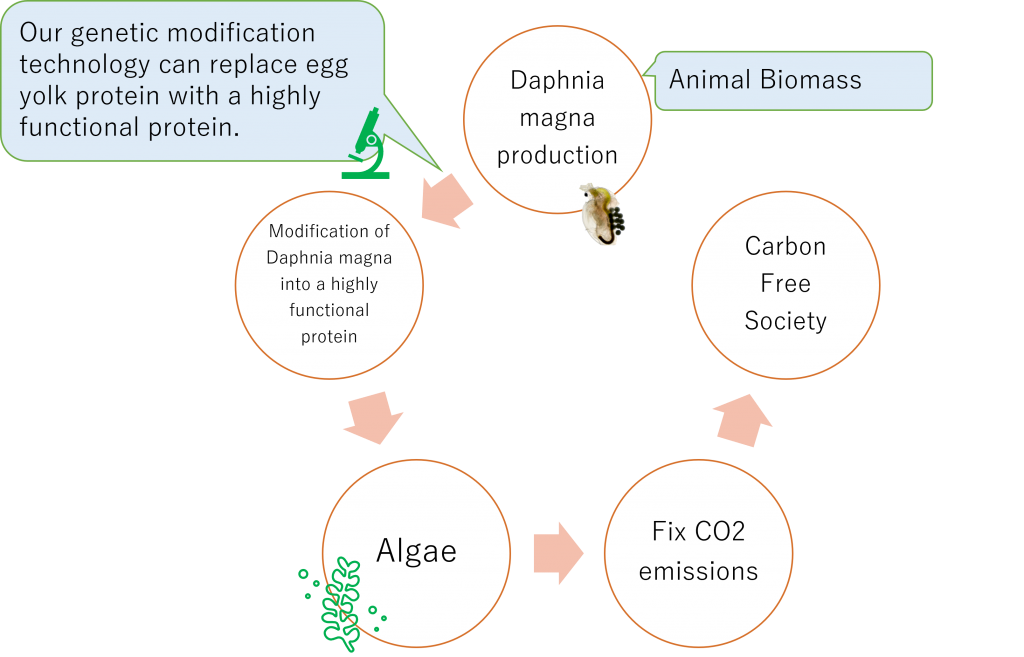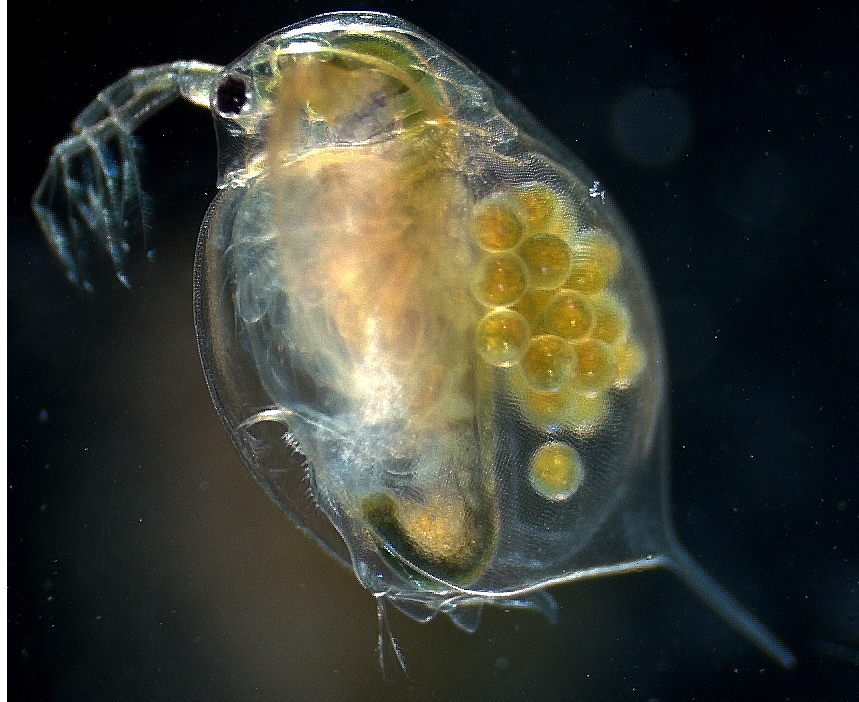
We will achieve the SDGs by understanding the relationship between “life” and “environment.
Daphnia genome study explores environmental changes
Daphnia magna plays an important role at the bottom of the food chain in freshwater ecosystems as a food source for small fish. When there are negative impacts to the environment, the daphnia populations decline and the ecosystem changes drastically. We are the first in the world to decipher the genetic information of Daphnia magna and analyze its response to the environment from its genes. This will allow us to understand, from their genes, how Daphnia react to the environment.

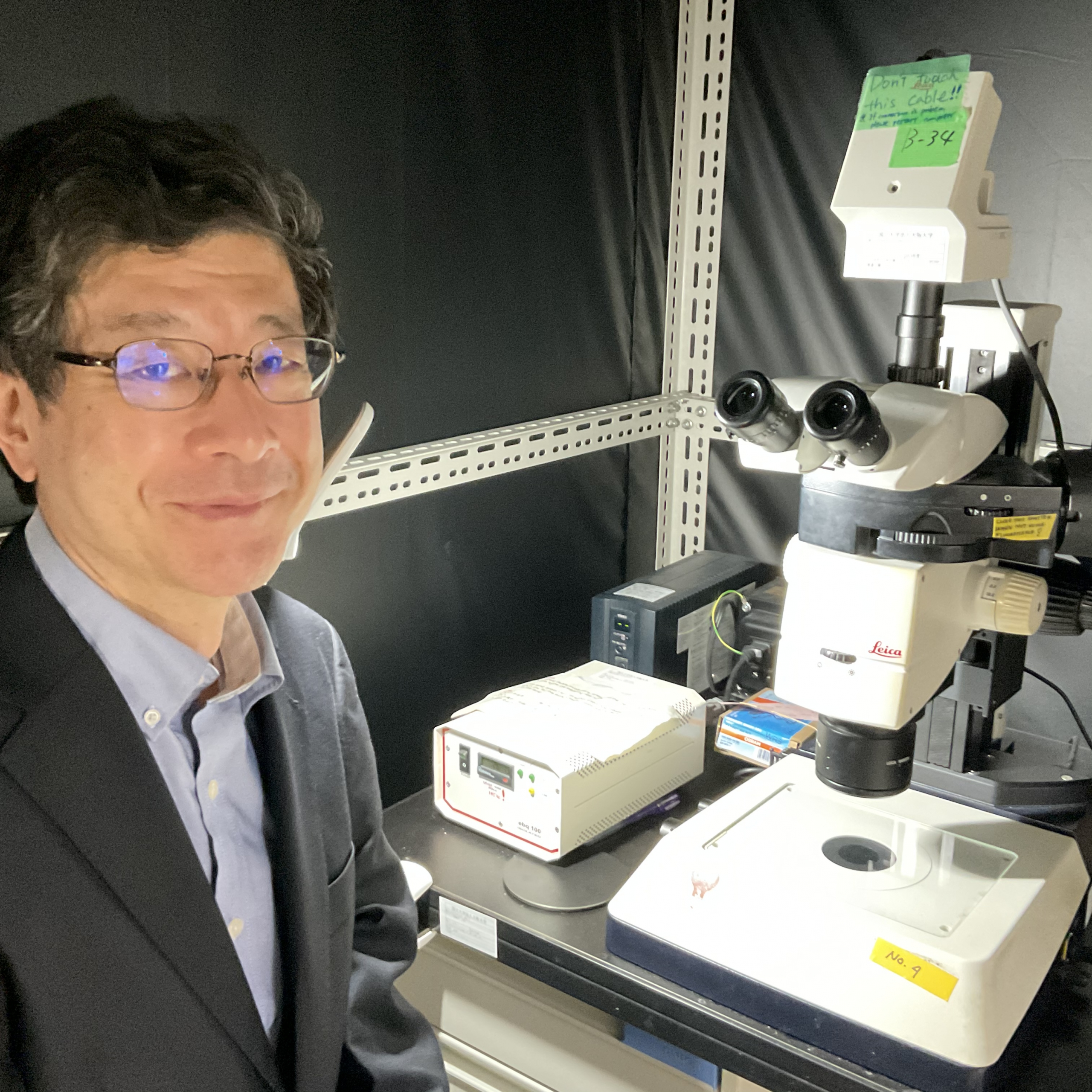 Prof.WATANABE
Prof.WATANABEAnalyzing the environmental response of Daphnia magna can also lead to an understanding of the effects of climate change.


Creating a Daphnia magna that alerts us to changes in the environment with light.
Understanding the interaction between Daphnia magna and the environment will help us understand and protect the quality of water in lakes and marshes. We will explore the secrets of Daphnia magna and use them to find solutions to water environmental problems. For example, by using gene-editing technology to create Daphnia magna that glows with pollutants, we will be able to easily see changes in the environment.
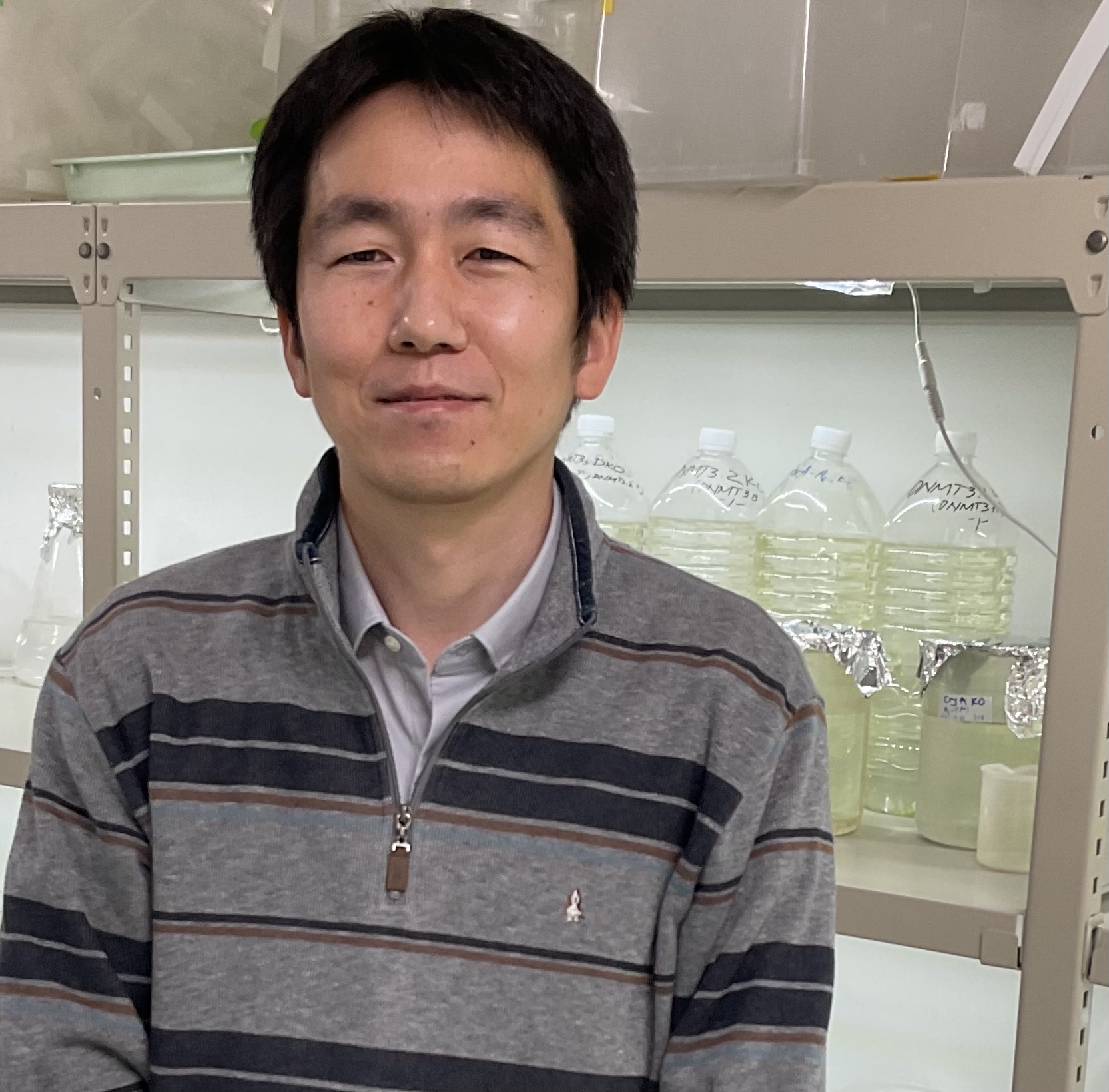


Our laboratory is the only one in the world that can edit the genome of Daphnia magna.

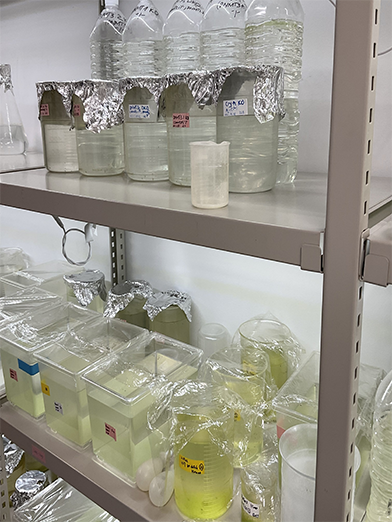
We are setting up various environmental conditions to explore the ecology of Daphnia magna.

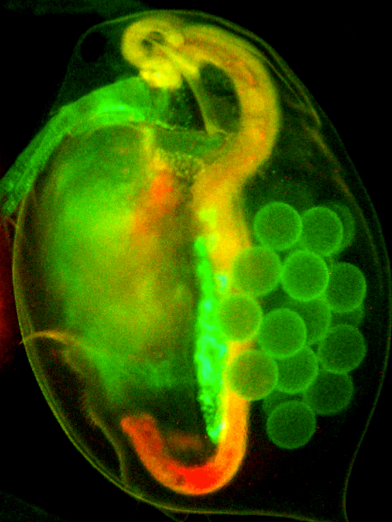
Daphnia magna genome-edited with fluorescent proteins
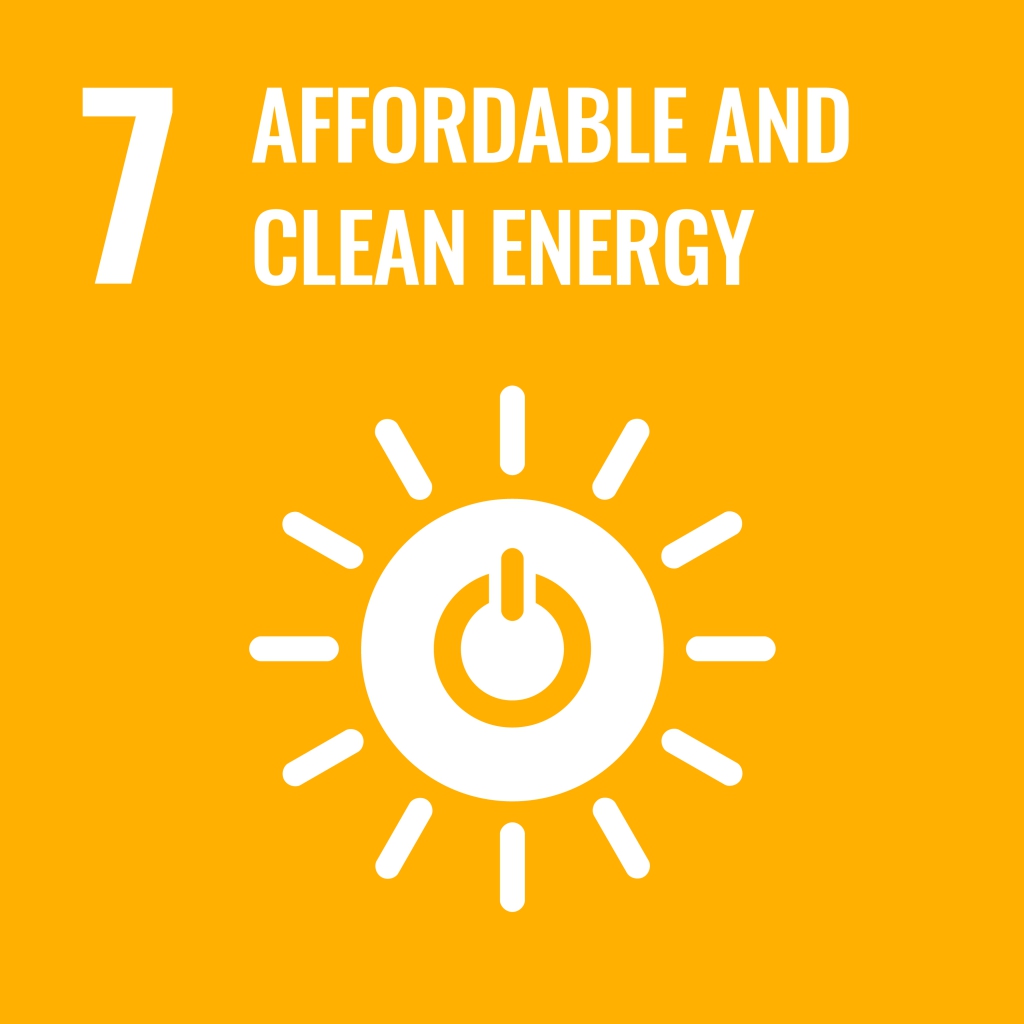

We have an eye on genetic modification of Daphnia magna, an animal biomass, for decarbonization.
By genetically modifying Daphnia magna, highly functional proteins can be efficiently produced. Daphnia magna feeds mainly on microalgae, which are excellent at carbon fixation, so it is possible to produce highly functional proteins that have been difficult to produce with algae while fixing carbon, thus contributing to a decarbonized society.
- What is biomass ?
-
It is a reusable organic resource derived from plants and animals, and mainly includes wood, seaweed, food scraps, paper, dead animals, manure, and plankton. In this case, since Daphnia magna is zooplankton, it is called animal biomass.
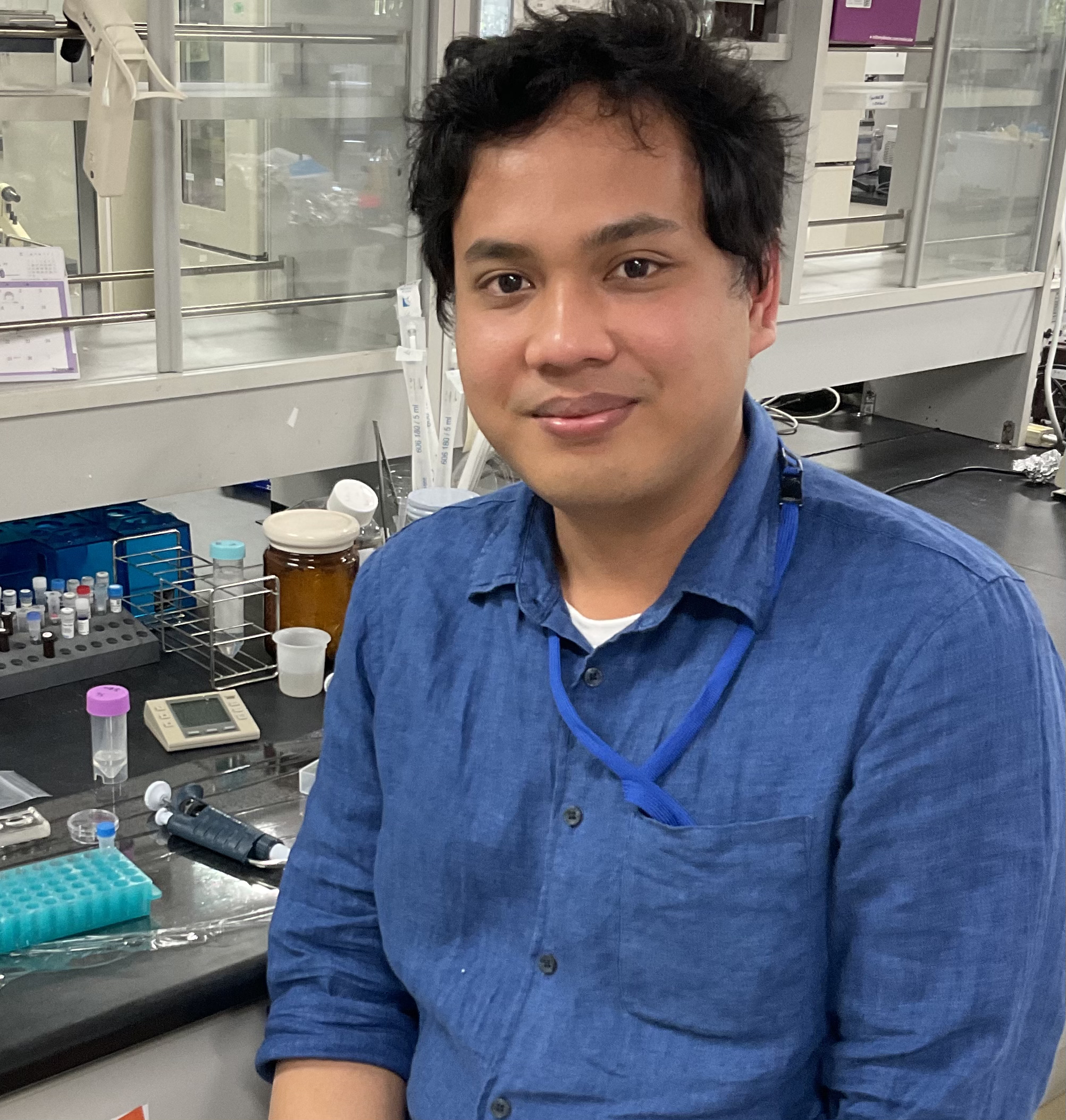


The highly functional proteins produced by Daphnia magna can be used in research to create antibody drugs.



Our genetic modification technology replaces egg yolk protein with a highly functional protein.

